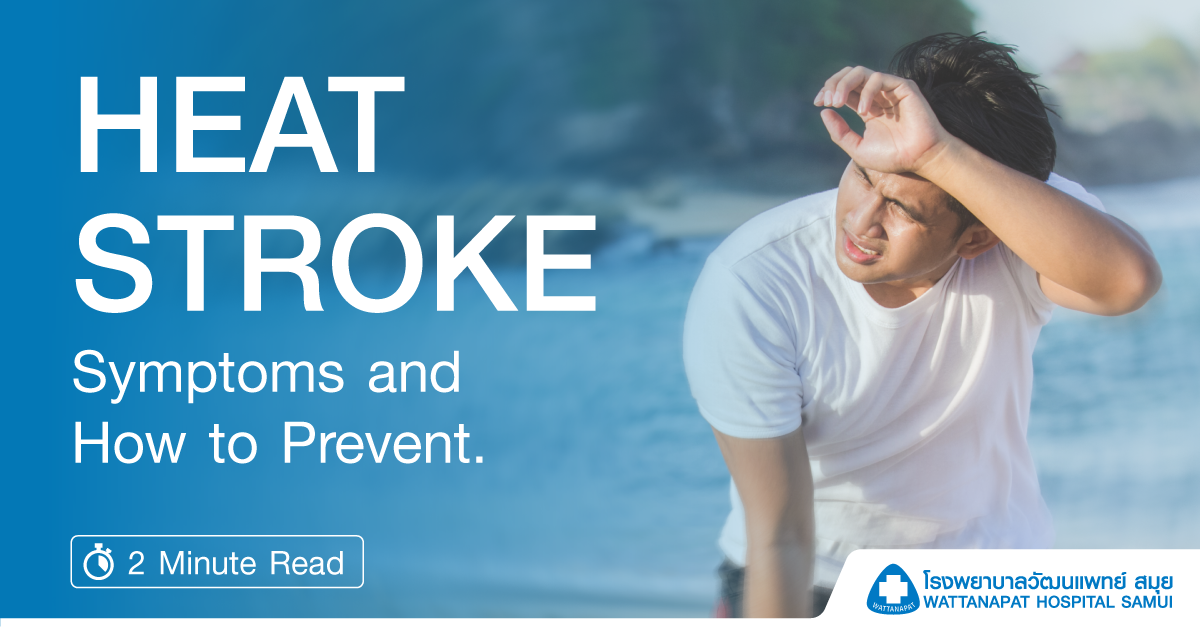Heat Stroke
Heat Stroke
"Heatstroke" is a dangerous condition commonly encountered during hot weather. It occurs when exposed to heat waves or hot temperatures, leading to the body having a higher-than-normal temperature. When symptoms occur, immediate treatment is necessary as it can severely affect the heart, brain, kidneys, and muscles. If treatment is delayed, it can be life-threatening.

Symptoms of heatstroke
1. Body temperature rising to 40 degrees Celsius.
2. Lacked of sweating.
3. Excessive thirst.
4. Rapid breathing.
5. Fast heartbeat.
6. Headache and dizziness.
7. Low blood pressure.
8. Weakness.
9. Nausea and vomiting.
How to Prevent Heat Stroke
1. Staying hydrated by drinking enough water (at least eight glasses a day).
2. Wearing light-colored and breathable clothing.
3. Using sunscreen with SPF 15
4. Avoiding excessive alcohol consumption
5. Avoiding prolonged exposure to the sun
6. Avoid engaging in strenuous activities in hot weather.
If someone exhibits symptoms of heatstroke, it's important to move them to a shaded area with good ventilation, have them lie down with their feet elevated, remove excess clothing, use a damp cloth or ice packs on their neck, forehead, and armpits, and use a fan to help cool them down. If they haven't lost consciousness, encourage them to drink plenty of water and seek medical attention promptly.


